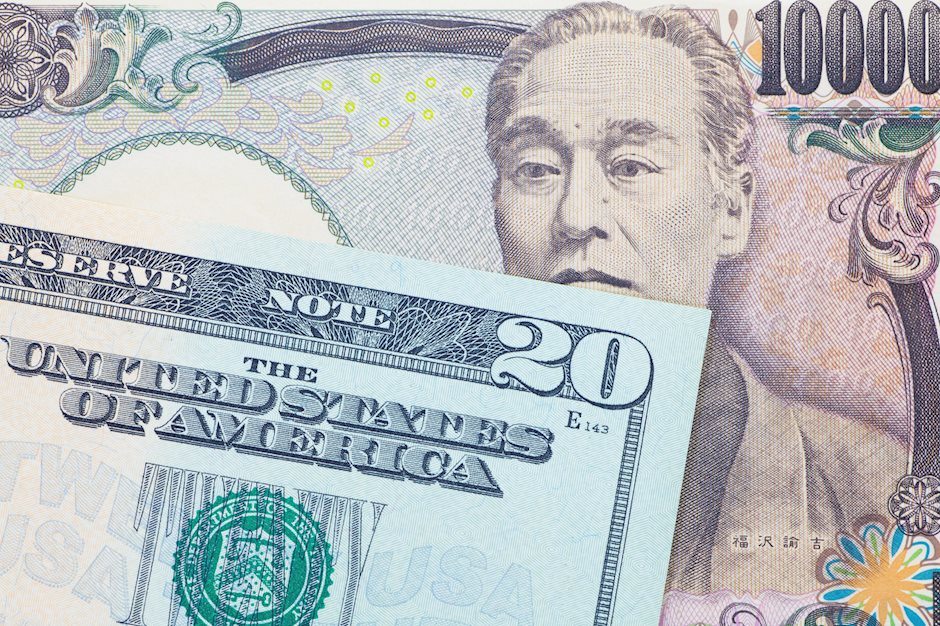USD/JPY: a case for the downside, the yen picks up repatriation flows, AKA, the safe haven bid as macro picture deteriorates
- Risk off sends USD/JPY to fresh short-term lows.
- The Japanese yen has seen some strength with its usual correlation to global equities.
- The outlook is deteriorating in terms of the health of the economy on a macro scale.

USD/JPY has dumped on Thursday as the trade tensions escalate with Trump now apparently targetting Japan's auto industry in the next chapter of the trade war saga - (Will get to the part as to why that would strengthen then yen shortly).
For the meantime, the US/JP spread has widened and US 10-year yields are down around 1%. At the time of writing, USD/JPY is trading at 110.70, up from the NY session low of 110.51 and down from a high of 111.52.
The Japanese yen has seen some strength with its usual correlation to global equities.
Closing changes for the main European bourses:
- UK FTSE 100 -1.0%
- German DAX -0.7%
- French CAC -0.2%
- Spain IBEX -1.2%
- Italy MIB -0.3%
Wall Street close
For the U.S., Wall Street closed in a sea of red as well, bar the DJIA yet again that managed a small up for Thursday: 25,995.87, +20.88, +0.08%. Looking around, the US 10-years were down at 2.87%, -1.00% from 2.91% and the DXY was treading water on the 95 handle at 95.04 into the close and within the day's range of between 95.21 and 94.93. The ADP miss was also a thorn in the dollar's side today - (US Aug ADP National Employment, 163K, 219K prev, 190K forecasted, 217K revised) and that offset the bullishness in the services ISM that was better than expected, as well as the initial jobless claims falling to a 49 year low.
However, something more significant was at play today and that was signs that the market is getting set for some massive repatriation of overseas investments by Japenese pension funds and investors - which is more commonly mistaken as the safe haven play, in yen strength.
The outlook is deteriorating on a global macro-scale in terms of the health of the economy. China is leading the way and Trump's protectionist stance is at the heart of it. Trade war risk goes beyond Chinese and US relations and EM risks are not contained to just those nations suffering these Fed rate rises such as those with overseas exposure in borrowings in the dollar and negative exposure to a rising greenback and US interest rates.
Investors are getting set for further tariffs imposed on Chinese imports by the Trump administration and today was the day that these could well be imposed - We are waiting for announcements that could come at any time from the Whitehouse. However, we also had wires crossing recently that Trump is considering to impose tariffs on Japanese autos and USD/JPY dropped hard on the knee-jerk to the news. But why would the yen strengthen on that?
As a major exporter, the threat of escalation in the global trade war should hit both Japan and the yen very hard
As touched on already, the safe haven status and flows that the yen collects are much more to do with repatriation flows than anything else. The yen is not so much a bellwether for global market stability, but it is regarded as a proxy for how Japanese investors feel about the state of investing abroad and a deteriorating macro outlook is likely to encourage repatriation - It has nothing to do with Japan’s economic fundamentals -That is a misnomer if thought otherwise - Japan is probably the world’s wealthiest creditor nation where it holds huge financial wealth amassed abroad, (Outward investment flows have been the consequence of the Bank of Japan’s monetary stimulus, limiting rates of return in the home market, forcing investors into higher-yielding investments abroad like emerging markets), but its domestic fundamentals are certainly not a safe haven for one's idle capital.
EMs are deteriorating and it looks as though the yen could continue strengthing as repatriation increases - so not to be mistaken as the yen taking back its safe haven status - Far from it - and the dollar should find its self back in the driving seat in due course - especially as trade wars continue to intensify and our news wires are filled with further headlines relating to Japanese auto tariffs - (It was already questionable how Japan will weather a deterioration of Chinese exports considering it, among other nations such as S.Korea and Taiwan, supply the bulk of components and raw materials used in the Chinese exports targeted by the Trump administration). As a major exporter, the threat of escalation in the global trade war should hit both Japan and the yen very hard.
The macro picture is deteriorating- Copper and AUD/JPY tell-tale signs:
- AUD/JPY: risk-off in play and here to stay - looking for break-out below Bollinger band support
USD/JPY levels
Valeria Bednarik, chief analyst at FXStreet explained that the pair has turned bearish in the short-term:
"As in the 4 hours chart, it is trading below its 100 and 200 SMA, which continue lacking directional strength, running parallel around the 111.00 figure, while technical indicators maintain strong downward slopes, nearing oversold readings. Last week low at 110.68 is the immediate support, with a clear break below it on a disappointing US employment report favoring a downward extension to 109.80.
Author

Ross J Burland
FXStreet
Ross J Burland, born in England, UK, is a sportsman at heart. He played Rugby and Judo for his county, Kent and the South East of England Rugby team.

















